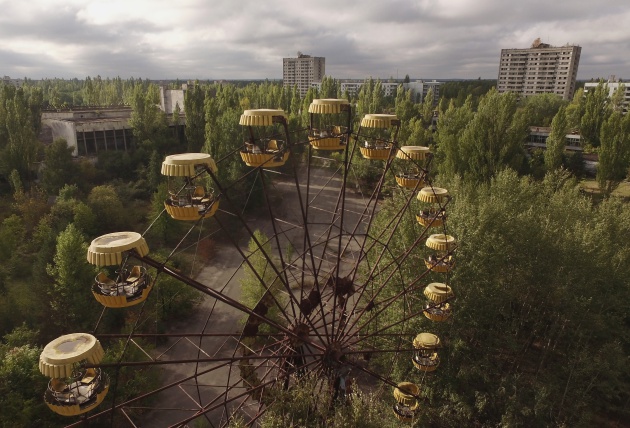El pasado 26 de abril se cumplieron 30 años del mayor accidente nuclear de la historia. Nuestra querida Kathleen, fundadora de Smyth Academy, ha querido escribir un artículo al respecto.
¡Esperamos que lo disfrutéis!

Thirty years have passed since the complacency of our world was shattered by the news of the Chernobyl nuclear disaster which caused deaths and caused hundreds of thousands of people to be permanently evacuated from their homes, land and source of livelihood. Another similar number were forced out of necessity to go back to their roots after a period and to be continually exposed to high levels of radioactivity and other uncounted thousands to live in dangerously contaminated areas which are not openly recognised as such but are, very clearly, just that. The half a million workers who dealt with the situation faced a similar fate. The most vulnerable and possibly forgotten victims were and are the million missing children, those unborn or still-born and those suffering genetic mutations.
We gather that there are few reliable extensive or profound studies on the true level of devastation and there exist certain obstacles to gaining public scrutiny of results, statistics or information. One has to wonder if this is a strategy based on the idea that what is not known does not exist: hence, let sleeping dogs lie. Why else is the public in general not able to react massively as fiercely as one would expect and to learn productively from the greatest nuclear tragedy in history. The interests and pressures must be enormous.
Chernobyl was not the only nuclear catastrophe .In 1979,1989 and 2011, we had the Three Mile Island ( Harrisburg, USA. ) level 5 ( all measured on the INES 7 point scale ) disaster, the Vandellos ( Tarragona ) level 3 accident and the Fukushima Daiichi ( Japan ) catastrophe, the full magnitude of which is still unclear as no-one knows the whereabouts of the contaminated fuel or what state it is in. On our planet, land, sea and air have been affected then, are still affected and will be affected for an unforeseeable time in the future. Our sense of time and that of nuclear activity time have nothing to do with each other. Neither rivers, lakes, reservoirs nor sea, nor the flora and fauna nor human beings had any escape route. The MIT has warned that within 10, 27 or 50 years respectively, accidents of the magnitude of these three could be repeated.
The price of these disasters that we have to look at first is the loss of life, the genetic mutations that are still being observed and discovered in plants, insects animals, fish and human beings, the damage to the ecosystem, the loss of homes, roots and means of livelihood and the physical and mental health problems produced. Above all, there is the situation of the most vulnerable victims, the children, who are still exposed to an threatening present and future. Our children are our future. The economic cost of the immediate handling of the crises is colossal and the accumulated and ongoing expenses are incalculable because of the difference between our time and nuclear activity time. A part of north, south east and west Europe, and America been affected and the ocean too. The present, in these areas, is damned and the future threatens more horror. Those in areas unaffected as yet but still depending complacently on nuclear energy should register this. Only recently, Germany has had to shut down two reactors because of the existing danger.
We cannot control natural disasters: they are often unforeseen and incalculable. But we can influence and change the decisions and actions of humans. This is the vital difference between these two types of tragedies. One is avoidable and the other is not. We make a deliberate choice about the energy we use. And in the “ developed” world we relish being able to burn up energy at will; in other words, wasting a large amount. Human error or technical failure have been behind most of these accidents and human and technical errors plus ignorance have been exposed in their immediate and post crisis management.
We were bombarded with seemingly plausible arguments to convince us that nuclear energy was “safe, cheap and reliable”. It has proved neither safe nor cheap. And does anyone still think it is reliable? We have not yet discovered how to safely dispose of nuclear waste, other than making sure that it is not on our own doorstep. Renewable energies are, despite the lobbies and the campaigns to blacken their image, safe, cheaper and reliable. One has to believe that those who calculate cost are putting humanity as a priority on their balance sheet and not merely considering the effects on the market and their takings. I want a world that is safe, sustainable and protected for my children, grandchildren and future generations. What about you?
I feel that it is worth reading the up-to-date Wikipedia information and the Green Peace report on the 30th. anniversary of Chernobyl and finding other impartial sources of facts. Why don’t you share your views on these vital events with other readers?…………….In English, of course.!
